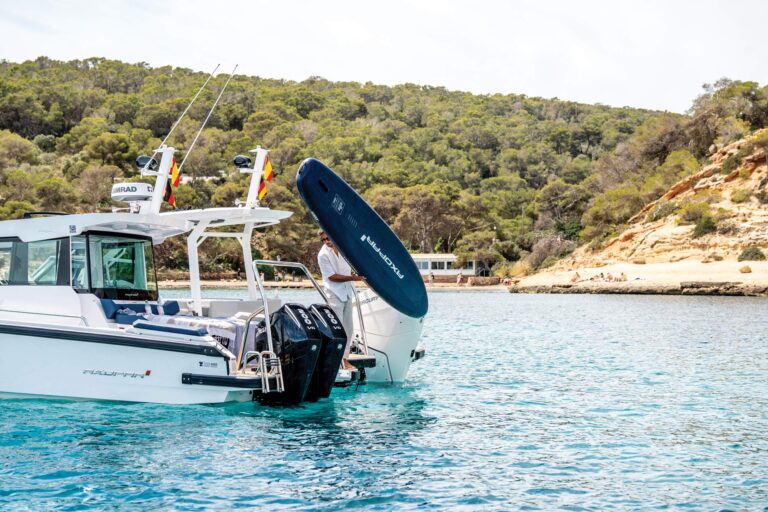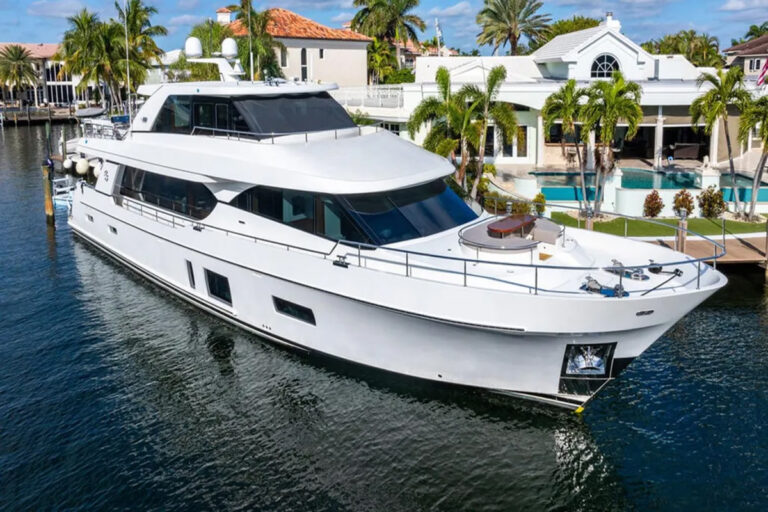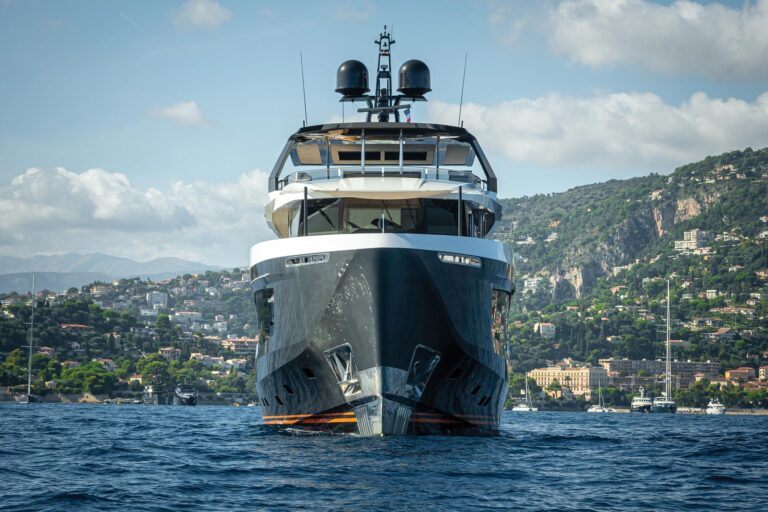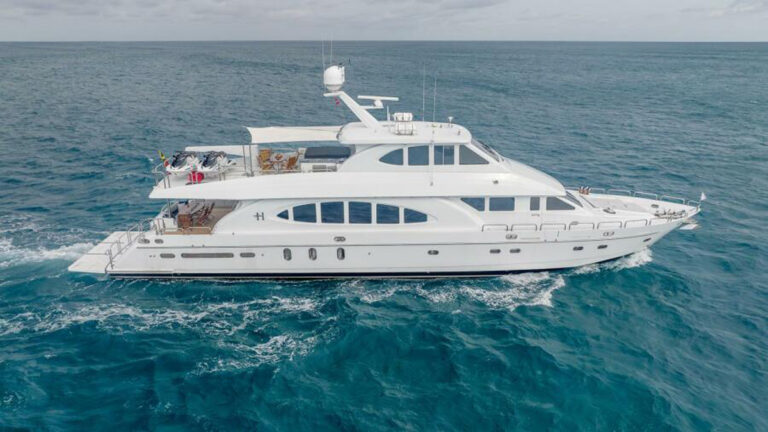I left Showtime this past May, safely cradled on the hard as an army of workers descended upon her. At that time I had discussed the planning stages of the refit with Steve Anderson, the project manager and president of Somerset, Massachusetts-based J&J Marine, the refit yard doing the work (“Refit to be Tried”). Now, weeks later, I’m back to lend a hand, and find out how some of the more intensive work has been going and get a handle on the costs.
“Time really is money in this business and with this project and our six-week-to-launch schedule, there was little, if any, wiggle room,” Anderson said as we strode across the yard to the work site. He had been putting in 70-hour weeks in addition to working on weekends.
Improving Showtime is a project-specific undertaking: the refurbishing of a 40-year old wood boat. The work required does not translate into what most owners need to tackle. But some aspects of this project apply to anyone considering a similar undertaking, whether on a wood or fiberglass boat. Digging into a project like this means looking at the various systems-from the electrical systems to the engines to the helm electronics-and examining them closely to see how they’ve held up. The project team looks at each potential fix and decides whether the system needs work now or can wait, all within the constraints of the budget.
“We carefully assess each job according to the kind of work the owner wishes to do,” Anderson said. “After a thorough consultation, we generate a wish list and pass that on to individual shop managers: fiberglass, wood, paint, mechanical, and so on. From there we generate a ‘guesstimate’ based on hourly rates until it is refined to a fixed estimate,” he said. Once that is approved, Anderson will set up a schedule for hauling and begin the work. “What is most important about the process and getting the job done right is to understand what you should be doing and what you can afford,” he added.
Electric Shock
One area where costs can climb rapidly is electrical work. “It’s not a matter of just connecting red to red and black to black, if you know what I mean,” said veteran master electrician Dan Koehn. “Everything needs to be brought up to ABYC specs.”
After 20 years in the U.S. Navy as an electrician, Koehn went into business and has wired everything from big ships to fuel barges to commercial fishing boats.
I caught up with Koehn and partner Doris Phillips in the engineroom. Phillips, an electrical engineer, is also Koehn’s fiancée and the duo were in the process of rewiring the original mechanical Detroit Diesel 671NA engines with state-of-the-art Murphy electronic gauges. As we discussed project costs Koehn piped up with a grin: “Here’s one for you, Ken: In order to change the temperature senders, we’ll have to drain the antifreeze from both engines. That’ll take a half-day in itself,” he said.
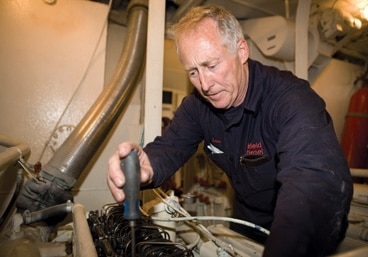
| | |
Hauling Out
Koehn and Phillips are also removing the old 32-volt system and replacing it with a new 24-volt system. It can be as simple as changing a light bulb and as cost-intensive as getting all new pumps and motors. “We’re into about $4,000 so far in pumps. And in addition, one of the major items that also needed to be purchased was an expensive 40-amp, 24-volt Newmar battery charger,” he said.
Then there’s all the old wire they have already pulled out of the hull that will be replaced. “As we go along here, we’re finding mistakes that were made that need to be fixed,” he said, gesturing around the space. Correcting past mistakes-like when the “missing” 32-volt alternators on the engines were replaced with new 24-volt units or when the wrong relays were put on the sump pumps- also translates into additional costs in both materials and work hours.
Koehn and Phillips, like most in their trade, work on a per-hour basis plus equipment costs. “Keeping the work going is important on any job but more so with such a tight deadline,” Phillips added.
“It’s very hard to estimate costs on a used boat,” Koehn said. “The older it is, the more difficult. You never know what you’re going to find until you get into it.”
Cost Centers
Finding problems will add extra bucks to the job, since issues that crop up need to be rectified and, with the boat out of service, doing it then makes sense, especially considering hauling and yard costs. “For example, we knew there were three planks below the waterline that needed replacement,” Anderson offered. “What we didn’t know was whether those nearby were bad as well as the ribs. “The only way we could find out was to get that old stuff out of there and have a look.” The same holds true for most repairs of this type, even with more familiar fiberglass work. A nick, ding, gouge, or stress crack in the gel-coat may be an easy fix, but a compromised substrate or delamination problems are more complicated, and usually quite costly, repairs.
“There are also the potentially expensive repairs involving running gear,” Anderson said. “For example, during a routine cutless-bearing job, let’s say about $350 or so, if the shaft is scored or the strut is elongated or the engine is out of align, that can drive the initial estimate through the roof.”
Thomas Coutts, J&J’s canvas manager, also had some insight into costs for his part in the project. “We meet with the owner to find out how the boat is being used,” said Coutts. “Obviously if it’s a fishing boat, I would suggest a specific type of covering. When it comes to fabric coverings aboard a basic cruiser, liveaboard, or one like this, the only choice is Sunbrella products. Optional choices include custom work with leathers and silk and other coverings but you usually see more of that on the bigger yachts where money is no object.”
The helm electronics are another potentially large expense. I met up with Dave Laska of L&L Electronics who was responsible for all the new Raymarine navigational electronics being installed. “After the initial consult with the owner, and finding out how the boat is going to be used, we’ll draw up a list of equipment we feel suits their needs,” Laska said. “In this way, costs can be controlled by getting the right units.” As far as budgeting out a job, Laska’s family-owned business makes sure there are no surprises. He also waded in on transducers. “We feel more comfortable doing the work ourselves, and call the boat manufacturer to get the suggested location,” he said. “Liability wise, I’d rather not subcontract this work out. If there is a problem, it’s ours.”
As most of the day workers began to knock off, Laska and Anderson were far from done for the day. “Having a boat is a romance,” Anderson said. “And with Showtime, well, that’s a love affair.” That labor of love can come at a high price. But if you get a written estimate, and monitor the progress of the project carefully-including any unforeseen add-ons-the end result will be a reliable boat that’s ready for many seasons of enjoyment.
In our final installment, we take a look at the before and after of the project. And as Showtime hits the water, we’ll review how well Anderson and his crew kept the project on schedule and on budget.





